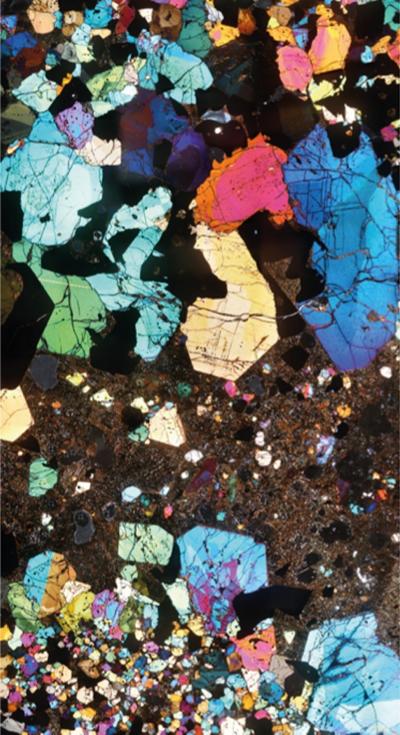Background:
Our understanding of the development of Earth’s crust stems from a studies of magmatic processes, volcanic constructs, and the interaction of volcanic materials with fluids. Volcanic terrains are where key mineral and energy resources are found and are potential locations capable of future CO2 storage. Investigations start deep in the Earth: where movement of the mantle transfers heat and materials to the crust. Melting of this rising mantle generates magma that enters the crust, where it transfers heat to the surrounding rocks. Cooling in crustal reservoirs generates crystals, releases gasses and powers circulation of hot water through the overlying strata. At the surface these processes are marked by eruptions of lava and pyroclastic material and by the outflow of hydrothermal fluids that form important metal deposits and support unique chemosynthetic ecosystems. Our research extends from mantle circulation to fluid-rock interaction, and uses the range of elemental and isotopic analysis available in our geochemistry laboratories to investigate how magmatic processes shape the physical, chemical and biological evolution of our planet.
Key Questions:
1. How does the ocean crust form? The formation, evolution, and destruction of ocean crust is a key part of the plate tectonic cycle that repaves two thirds of its surface every ~200 million years. Using samples recovered from below the seafloor by scientific ocean drilling and from ophiolites (slices of ancient ocean crust and upper mantle now exposed on land) we investigate how magmatic and tectonic processes build ocean crust along the mid-ocean ridges and how the crust is cooled through interaction with the overlying oceans.
2. How does the ocean crust mature? Throughout its life, the oceanic crust forms the key boundary between the oceans and the mantle. Chemical exchange between the ocean crust and seawater continues as the crust journeys across the ocean floor until it subducted back into the mantle. Using minerals deposited as a result of this exchange we investigate the role this process plays in the long-term global biogeochemical cycles that control Earth’s habitability and reconstruct past records of ocean chemistry that reflect changing environmental conditions on Earth’s surface.
3. What are the dynamics of mantle plumes? Upwelling mantle from the deep Earth recycles materials previously consumed at subduction zones. These include carbonaceous sediments and ocean crust. We aim to understand the rates and volumes which plumes “churn” old materials and introduce new rock to the Earth’s crust. By examining the progressive volcanic growth above these “hot spots” we gain an insight into the interaction between deep-sourced volatiles and hazardous explosive volcanoes. https://doi.org/10.1016/j.epsl.2020.116182

4. How is crust created by arc volcanism? Initiation of volcanism at the start of subduction through to development of extensive stratovolcanic chains is a key sequence driving crustal growth. Our research explores ancient deep volcanic systems in the Western Pacific to look back in time to what happened as the first crust descended back into the deep Earth. We also investigate how crust develops examining magmatic events in Western Anatolia – where the ancient Tethyan oceans are were consumed, and the ensuing continental collision hosts extensive magmatic activity. https://doi.org/10.1130/G45836.1
5. What is the role of Sub-aerial volcanism in the burial of organic carbon? Most volcanoes lie close to the oceans, and deposit millions of tonnes of ash into the oceans every year. On the seafloor, it increases carbon storage in marine sediments and reduces atmospheric CO2 Levels. Part of our work has involved examining how this natural process may be augmented by artificially adding ash to the oceans. http://dx.doi.org/10.1016/j.ancene.2020.100264
How do we do it?
We use chemical tracers and isotopic measurements of all types of volcanic materials to investigate fluid and magma interaction with crustal materials. Our instruments and clean laboratories are designed to provide high-quality analyses of a range of sample types; fluids, rocks, sediment and metals.

High-precision analysis of Pb isotopes provides a toolbox of parameters that enable us to track mantle recycling. Our measurement techniques are capable of tracking how volcanoes have changed their composition in response to pulses of material emerging from the deep Earth.
Our fieldwork explores submarine and subaerial volcanoes in locations from the deep sea, Ethiopia, Canary Islands, Turkey, Japan, Lesser Antilles, Oman, and Cyprus. A rock thin section laboratory provides us with the in-house ability to conduct microscopic examination of samples returned from the field to deduce the processes generating the rock fabrics, crystallisation processes and fluid-rock reactions.
Image right: Petrological microscope view of a magma mush : a hornblende gabbro cumulate from the Fasnia Formation, Tenerife. Width of view is 2.5mm.

More information relating to the video above can be found under Useful Downloads below.
Image right: Petrological microscope view of a magma mush : a pyroxenite cumulate from the Fasnia Formation, Tenerife. Width of view is 1 mm.
Who in the Geochemistry Group is involved?
Dr Rosalind Coggon; Dr Rex Taylor; Prof Damon Teagle; Prof Martin Palmer; Prof Steve Roberts.
Links to other Research Themes
Evolution of plate tectonics and mantle dynamics
Biogeochemical cycles and their response to global environmental changes